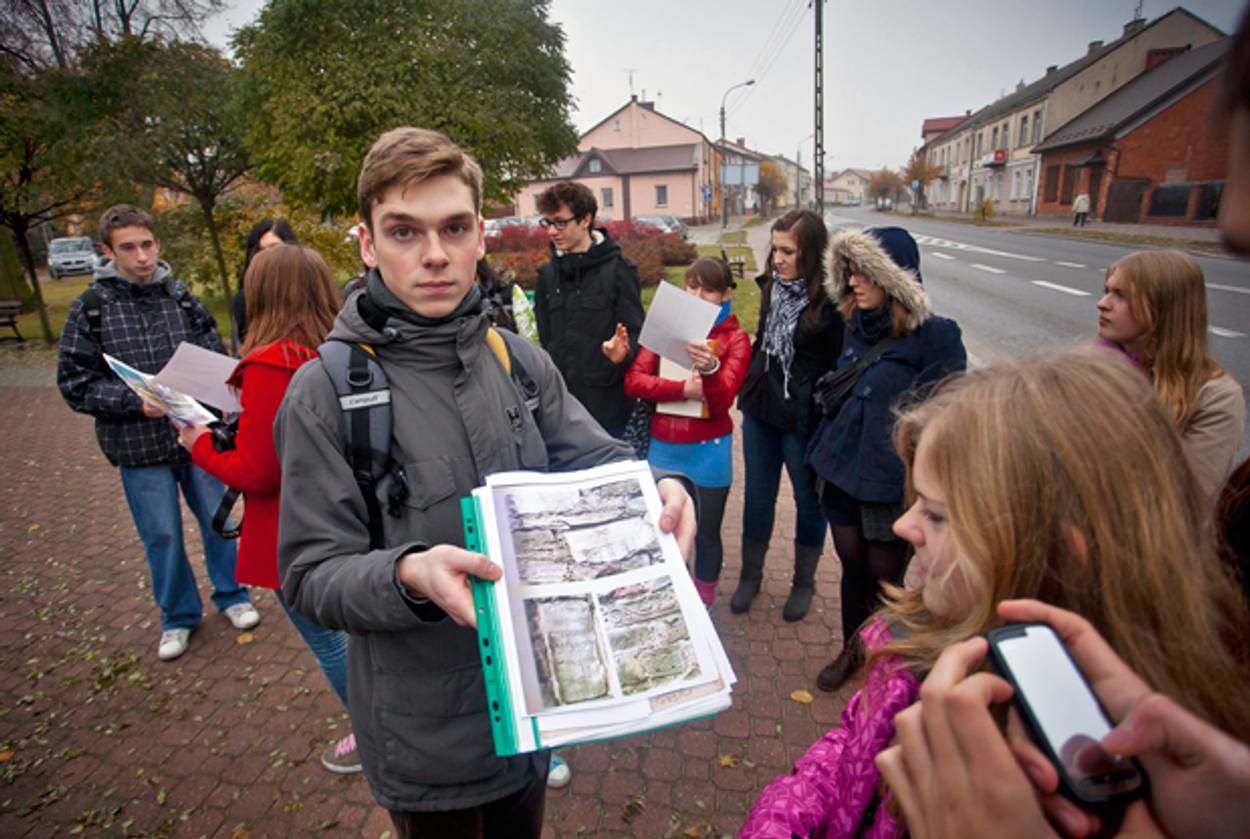Do Polish Kids Hate Jews?
A student survey about the Warsaw Ghetto uprising reflects the country’s new nuanced approach to the past




During the week of April 19, 2013, the Institute for Public Opinion Research (Instytut Badania Opinii Homo Homini) in Poland released the results from a survey administered to 1,250 Polish middle-school students. The survey focused on students’ “historical understanding” about the Warsaw Ghetto uprising, a striking moment of resistance staged by Polish Jews against their Nazi occupiers 70 years ago.
The survey results, which were released amidst a commemorative week in Poland that involved the opening of the new Museum of the History of Polish Jews, conferences, memorials, and TV programs about the uprising and other aspects of the Jewish experience in Poland during World War II, have been reported in the Jewish and Polish media and also in the New York Times. What followed has been a public outcry over what seems like a return to the days of Polish anti-Semitism in a country where only a handful of Jews now live.
The report states, in no uncertain terms, that Polish student “historical understanding [about the uprising] is weak.” Specifically, 44 percent of Polish students surveyed believe that Poles and Jews suffered equally during the war. An equal number said they would be disappointed if a Jewish neighbor moved next door—and 60 percent would be disappointed if they found out their significant other were Jewish. In addition, students ranked the Warsaw Ghetto uprising as “only” the seventh most important in a long list of Polish uprisings, a finding that survey analysts believed demonstrated that Polish students did not value the contribution of the Ghetto uprising to Warsaw history.
At first glance this seems awful. But the truth is that asking high-school students to rank relative degrees of historical suffering in a period they know very little about is hardly a good gauge of anti-Semitism. Nor do the personal preferences of high-school students about Jewish neighbors or sexual partners seem to be all that relevant, in a country that is overwhelmingly Catholic and where Jews are largely an abstraction. Second, and this seems worth underscoring: In a nation that is 99 percent Catholic, where Jewish history was swept under the rug for decades, Polish youth placed the Warsaw Ghetto uprising among the top 10 most “momentous events” (doniosle wydarzenie) in Polish history.
Among the findings brushed over by the authors of this survey were that 55 percent of these same children identified the leader of the Warsaw Ghetto uprising by name. In addition, 70 percent of them chose the correct date of the uprising. These two findings signal yet another triumph of Polish student understanding about the Jewish experience in the face of obfuscation, anti-Semitism, and misrepresentation of the Jewish experience in textbooks and family stories. (In this context, it seems fair to wonder how many American or Israeli high-school students would respond correctly to either question.)
I make these points for an important set of reasons. First, while adults are quick to jump to conclusions about the youth of today, all too often it isthe adults who are asking the wrong questions. Children today are historicized in many ways; they get their information about the past in the same ways they get their information about popular culture: through the Internet, films, and Facebook. In my own research with 200 Polish students across the nation, I find overwhelmingly that students want to—but are struggling to—understand the Jewish experience during World War II in the face of resistant parents or misrepresentations in the media. The more questions I ask of these Polish young people the more consistently they demonstrate baseline knowledge about the Jews, however flawed, and the more consistently do they demonstrate a curiosity about the Jewish past.
Historical understanding is a nuanced approach to a past event that must involve an entire community’s willingness to participate in that past. It is not Polish children who don’t understand the past; it is Polish society that must rise up to meet their curiosity.
***
Like this article? Sign up for our Daily Digest to get Tablet Magazine’s new content in your inbox each morning.
Magdalena H. Gross is a doctoral candidate in International and Comparative Education at Stanford Graduate School of Education.
Magdalena H. Gross is a doctoral candidate in International and Comparative Education at Stanford Graduate School of Education.